Maple trees have a dense canopy, so gardening around them is difficult. Also, these trees have shallow roots that seek nutrients, leading to competition among other plants. We did the research to find out what kinds of plants are best to grow under maple trees.
The best plants to grow under maple trees include:
- Japanese tassel fern
- Hepatica
- Canada violet
- Pennsylvania sedge
- Grass ground cover
This might sound like a lot, but each plant comes with different qualifications and benefits. Keep reading to learn about the benefits of planting these underneath maple trees!
![Pennsylvania Sedge photographed up close, What To Plant Under Maple Trees [Inc. Japanese Maple]](https://gardentabs.com/wp-content/uploads/2022/06/What-To-Plant-Under-Maple-Trees-Inc.-Japanese-Maple.png)
What To Plant Under Maple Trees—5 Plants To Consider
Check out the details on each of these plants below.
Japanese Tassel Fern
The Japanese Tassel Fern grows best in partial to full shade. This means it would be perfect for underneath or beside a maple tree. Typically, it will grow to 2 feet tall and 3 feet wide.
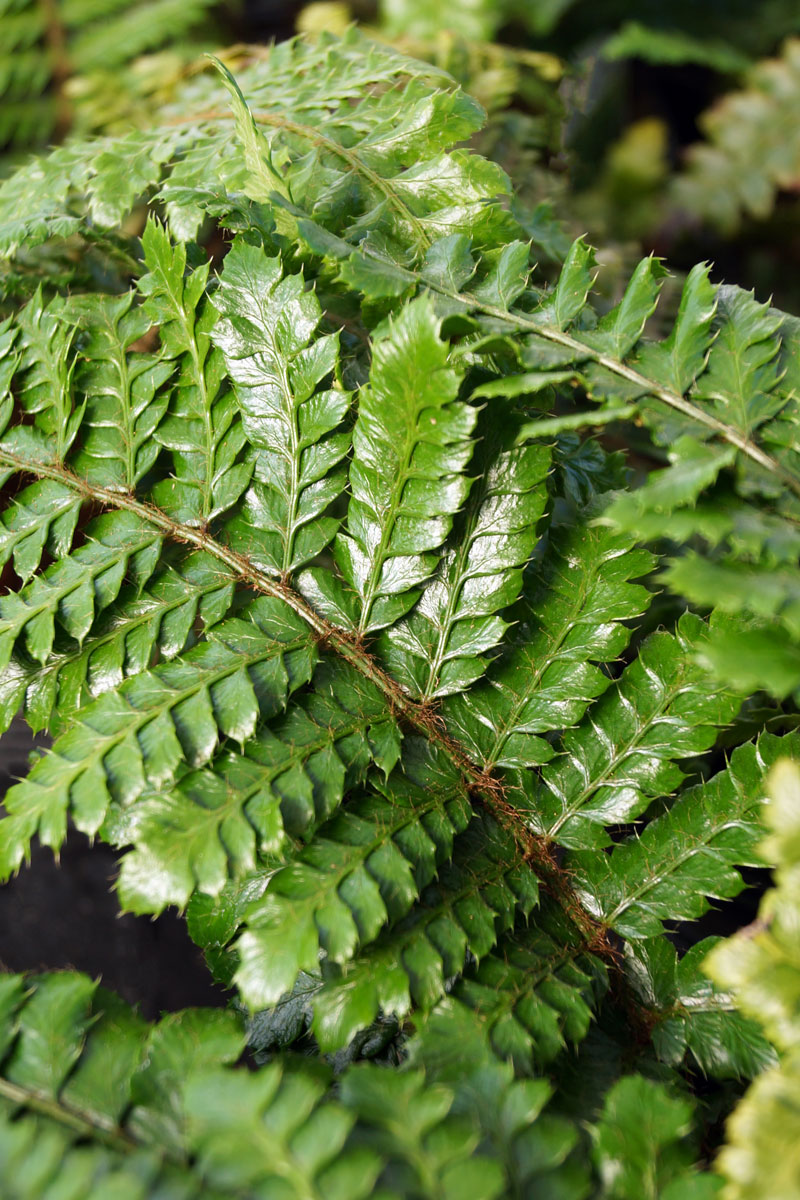
The benefits of growing a Japanese Tassel Fern include adding texture to your garden and increasing biodiversity. This plant gets its name from the way the fern leaves behave. It is also non-toxic to pets!
Hepatica
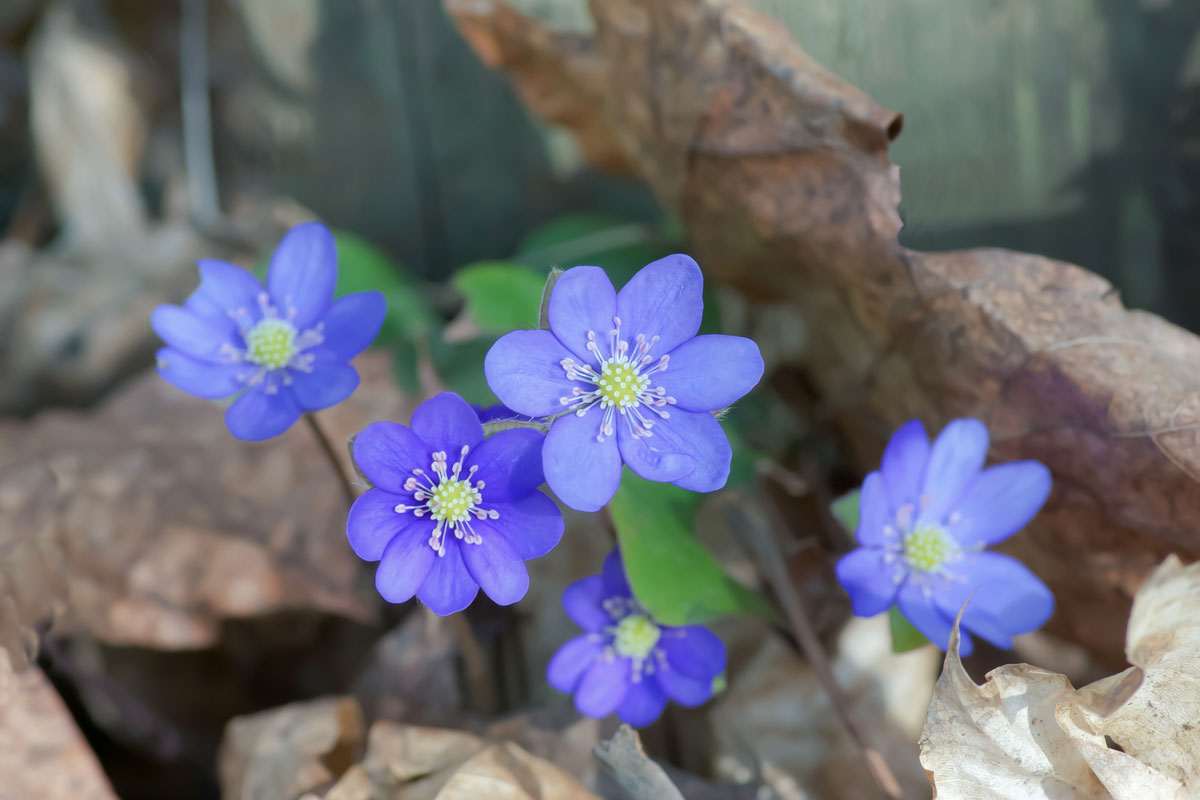
Hepatica flowers are a beautiful blue, white, or pink color in the spring. When it rains, these flowers may not open, yet they still look stunning under the tree. The flowers are only a couple of inches tall and grow up on a hairy stem.
The petals of a hepatic flower are actually not petals - they are sepals. Underneath a maple tree, this native perennial can thrive and brighten up the garden.
Canada Violets
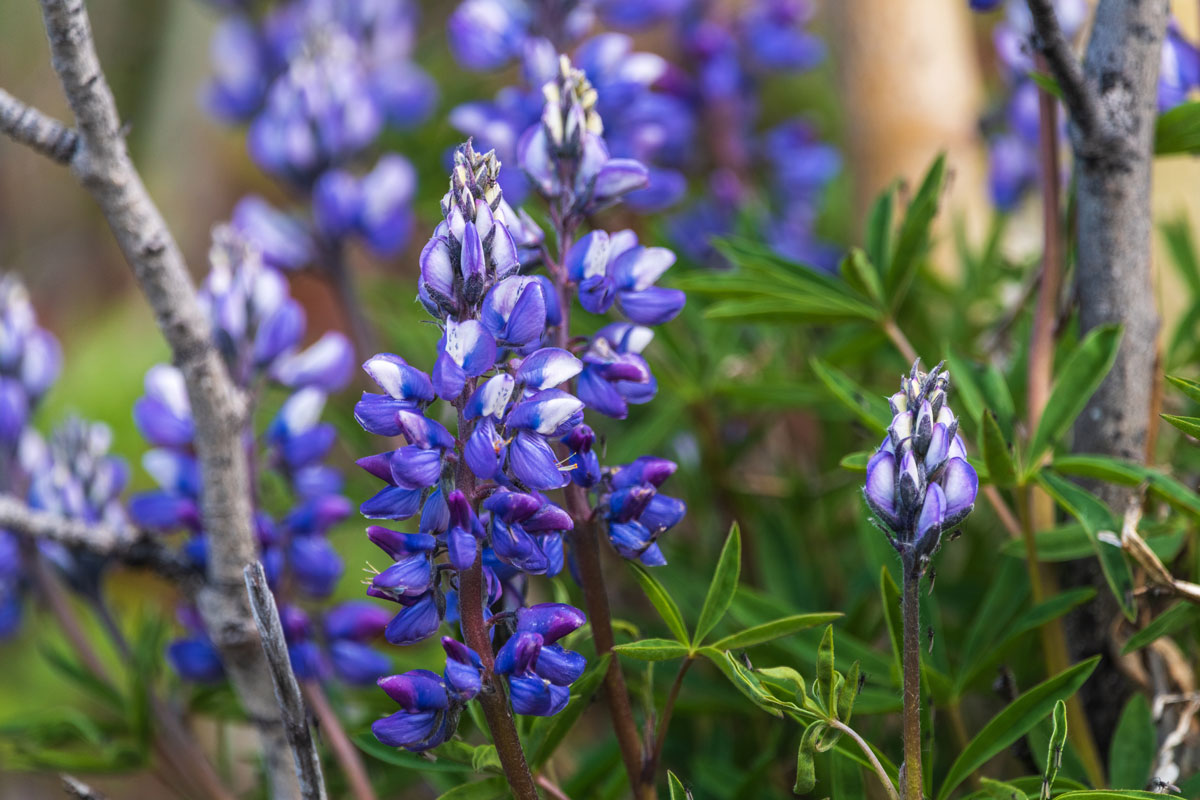
Canada violets are edible flowers that have heart-shaped leaves. With a stunning yellow center and white petals, this flower makes for a beautiful addition to any garden bed. Occasionally, there will be a hint of light purple in these violets.
The benefit of planting these is that they will attract birds! Not only will they love the Canada violets, but they'll probably perch up in the maple tree once in a while too! An important note is that this plant enjoys moist soil, so be sure to pair it with other plants that hydrate often.
Pennsylvania Sedge

Similar to dense grasses, Pennsylvania sedges are low to the ground and close together. This plant does very well in the shade, which is perfect for under the beautiful foliage of these trees. This perennial is usually less than a foot tall and has brown seeds at the top.
This is a beneficial plant to put in your yard because it will hydrate the other plants around it. Their roots can hold a good deal of water, adding to the soil food web as they decompose over time as well.
More than that, this sedge in particular, provides a larval home for over 20 species of caterpillars. So, when they exit the larval stage, you have a beautiful garden full of pollinating butterflies.
Pennsylvania sedges also attract birds (who eat the brown seeds) and rarely catch plant diseases.
Here are Pennsylvania Sedge starter plants on Amazon.
Grass Ground Cover
Dwarf mondo grass is a fairly short and clumped together grass. Since this grass only requires filtered sunlight, it makes a great ground cover for under the tree.
Pair this together with rocks to make a stone and grass mosaic. Or, you pair it with one of the flowering options mentioned earlier.
Hakone grass is a perennial native to eastern Asia. This plant enjoys shade and wouldn't mind being underneath a maple tree. The arching grass gracefully ripples in the wind.
Consequently, many people will use this plant as a nice ground cover, including as a base for a garden bed underneath a tree. Hakone grass rarely gets infected and does not attract pests.
Blue oat grass gets its name from the tinted blue color of the plant. While you can use this as ground cover, it is more often used directly beside a maple tree as it needs a bit more sun than the other grasses.
What's more, it grows to be about 2-3 feet tall and doesn't need pruning more than once a year.
Click here to view Blue Oat Grass on Amazon.
What to Plant Underneath a Japanese Maple Tree?
Japanese maple trees grow best in slightly acidic soil, so the plants that will do best underneath it also enjoy somewhat acidic soil. The following plants recommended for maple trees also work for Japanese maple trees:
- Pennsylvania sedge
- Japanese tassel fern
- Dwarf mondo grass
- Hakone grass
Other plants that pair well with Japanese maple trees include rhododendrons, dogtooth violets, and coral bells.
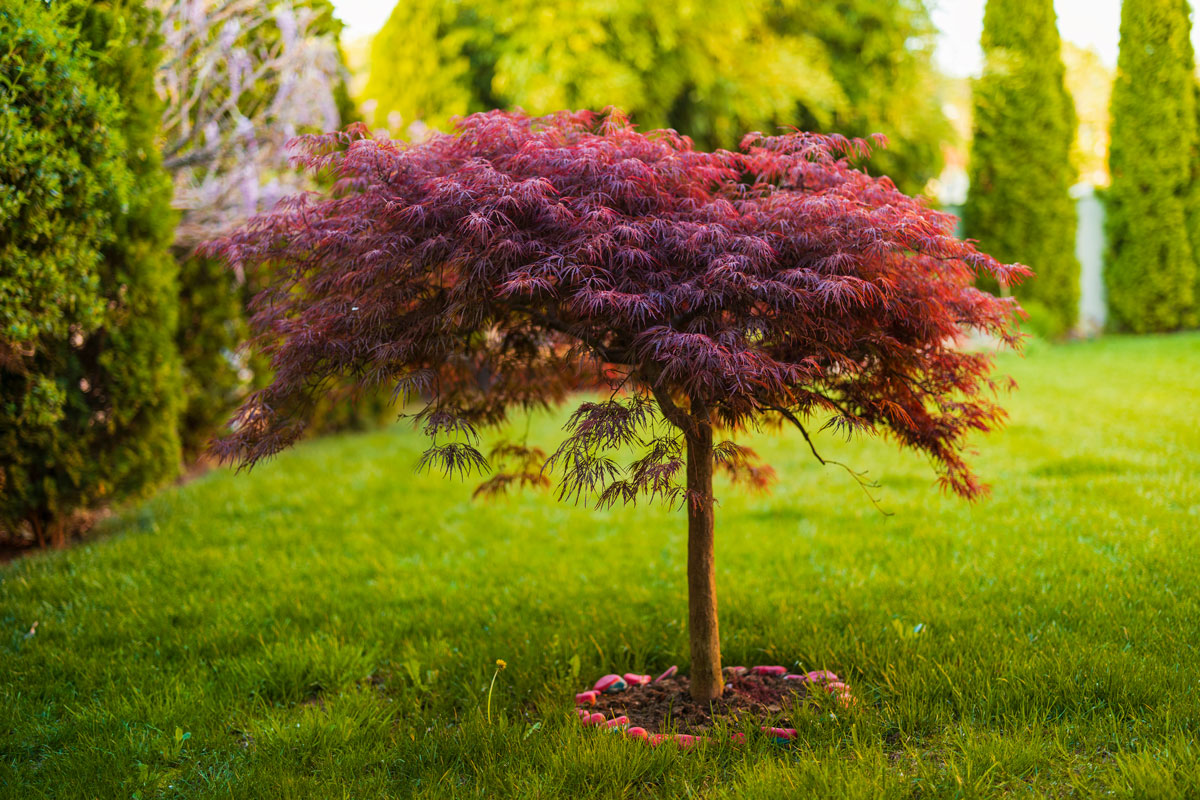
Rhododendrons enjoy the acidic soil that Japanese maple trees grow in. They also crave filtered light, which this tree can provide in between the foliage. The flowers bloom annually and the bush remains a nice evergreen throughout the year.
Sometimes, people make a juice out of this flower and drink it to promote good heart health. Please educate yourself on how to do this safely, however, because ingesting certain parts of the plant can do more harm than good.
View rhododendron concentrate on Amazon.
Dogtooth violet, sometimes called a white trout lily, is a popular companion plant for Japanese maple trees. Note that the bulb actually blooms upside down on the stalk!
The name "trout lily" is used because the leaves sometimes have similar markings to trout. Also, the plant is actually not a part of the violet family, making the title "dogtooth violet" a controversial one.
Yet another edible flower makes it on the list, and it is useful as a substitute for starch in Japanese cuisine. There is a powder called katakuriko that is derived from the dogtooth violet. It is scentless, tasteless, and used to thicken liquids or prep food for frying.
Coral bells are stalks of bronze and burgundy bell-shaped flowers. They attract tons of pollinators, but not deer or rabbits. Coral bells are drought resistant and need very little maintenance.
These flowers need slightly more sun than the trout lily and rhododendrons, so consider planting them off to the side of the tree. Regardless, they will look beautiful underneath the maple.
To learn about other kinds of maple trees, visit our article here: What Are The Best Maple Trees For Shade?
What Not to Plant Underneath a Maple Tree?
Do not plant hostas under a maple tree! The maple tree will absolutely choke the hostas, and they will perish.
Maple trees have thin, yet aggressive roots in the sense that they do not tolerate every plant underneath them. That is why it is important to choose a plant that we listed above, and definitely not hostas.
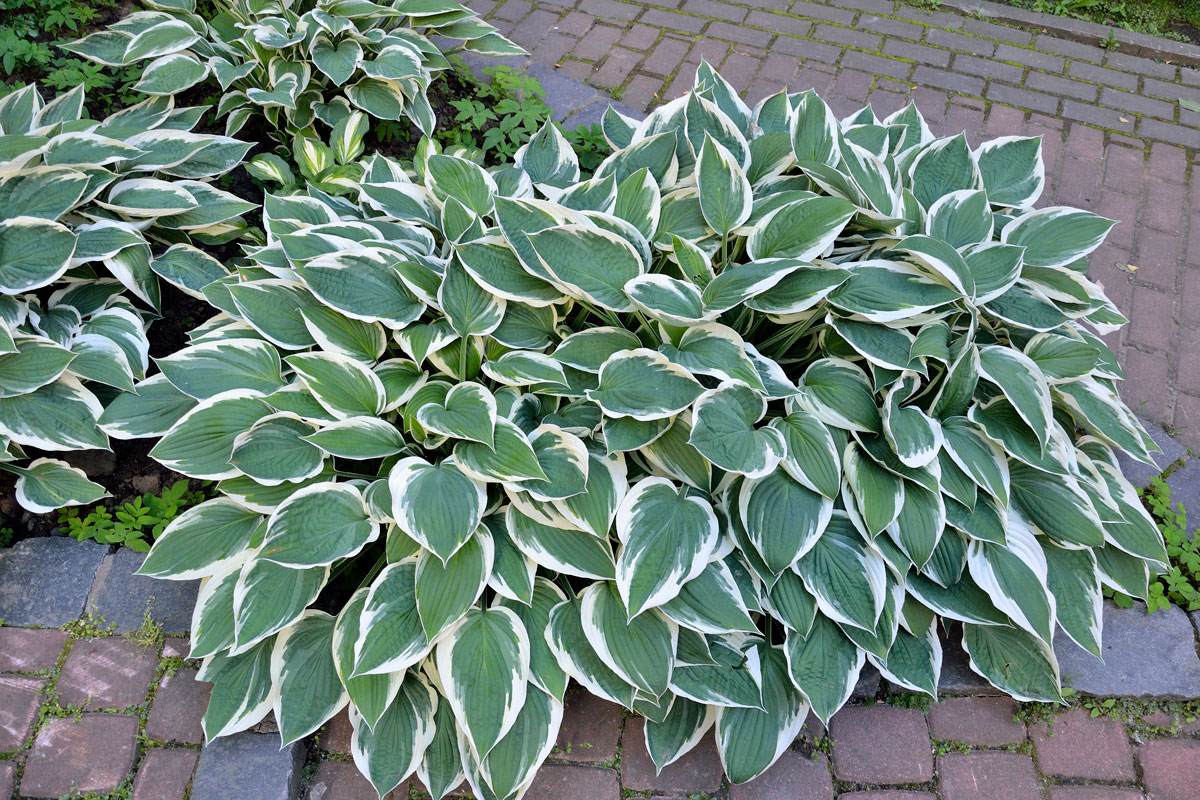
Hostas, also known as plantain lilies, have gorgeous green and yellow leaves. Sometimes, the edges are white instead of yellow as well. While they look stunning and are actually quite popular - they are also toxic to pets.
Note you can use this elsewhere in the garden, but preferably not under a tree.
Why is My Maple Tree Turning Yellow?
Your maple tree is probably anemic! Yes, you read that correctly. Maple trees often struggle with getting nutrients like iron, zinc, and magnesium, thus causing their leaves to look yellow.
When the pH of the soil is more basic than neutral or slightly acidic, it increases the chance of iron deficiency.
One way to give more nutrients to your maple tree is through a foliar application, which means fertilizing the leaves instead of applying it to the soil. The stomata absorb the nutrients quicker than if the roots absorbed the fertilizer in the soil.
Another way to treat iron chlorosis (the yellowing of leaves due to iron deficiency) is through a trunk injection.
You can drill holes into the bottom of the maple tree and inject iron in different forms. Other methods of treating iron deficiency include soil mixtures and iron implants. We encourage you to consult a professional before performing a trunk injection! This can be a more risky procedure than using a foliar application.
View a liquid iron solution on Amazon here.
In Summation
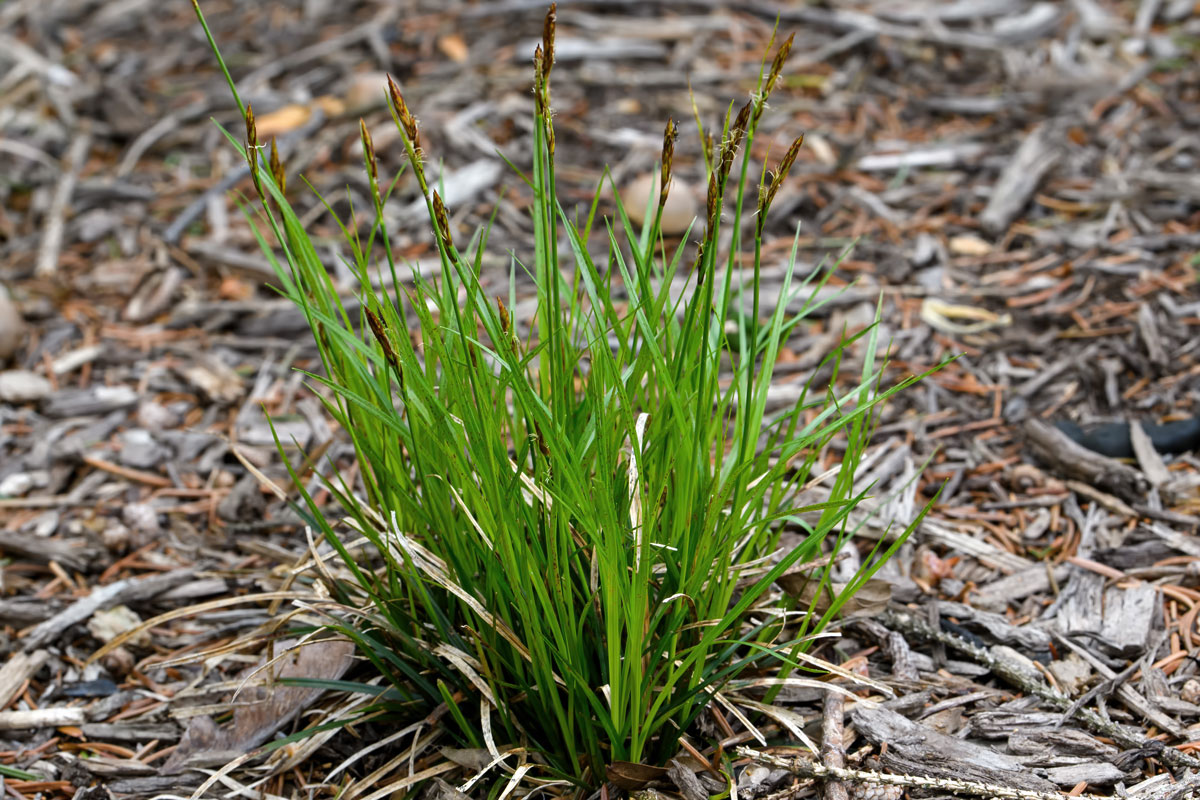
Maple trees are beautiful assets for any garden. Be on the lookout for bees, birds, and butterflies around your maple tree shortly after planting flowers in the garden bed below.
It would also be wise to invest in iron and magnesium to promote healthy growth of the maple!
If you enjoyed this post, check out our related articles:
What To Plant Under Apple Trees?
How Hardy Are Maple Trees Are And Which Zones Are They Right For?




